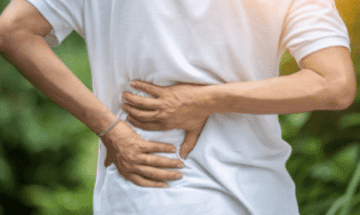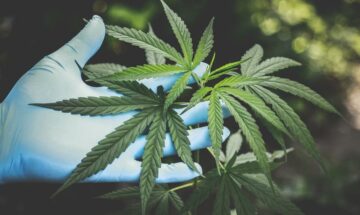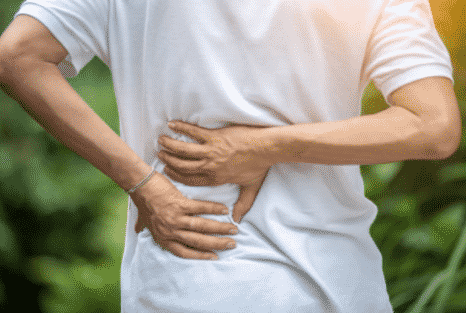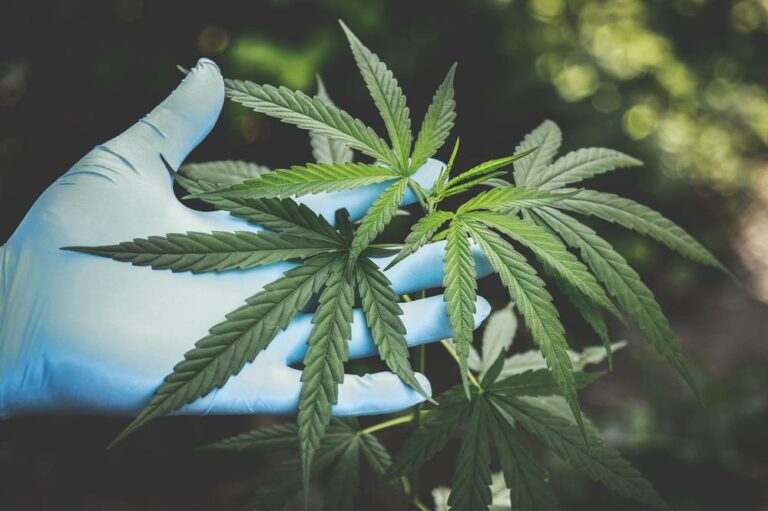 Can CBD Help With Tremors?
Can CBD Help With Tremors?
- Tremors are caused by conditions, such as neurodegenerative diseases, anxiety, and brain injury. A study showed how the human endocannabinoid system (ECS) might modulate the brain cells’ ability to form new neural connections (1).
- A 2018 study released in Neurochem evaluated how cannabidiol (CBD) and other cannabinoids might have neuroprotective effects in a Huntington’s disease cell culture model(2).
- Research determined that there is a high density of receptors in areas of the brain that control motor function, prompting scientists to pursue studies on how tremors may be alleviated through ECS stimulation(3).
- In a study, individuals experiencing severe Parkinson’s disease-related pain and tremors showed significant improvements after medical cannabis treatment (4).
- CBD is a medically-accepted therapy for certain childhood epilepsies (5). However, there is a lack of evidence if CBD, as a monotherapy, can help improve essential tremors.
Can CBD Really Help With Tremors?
Tremors are caused by conditions, such as neurodegenerative diseases, anxiety, and brain injury.
Scientific studies have yet to determine how cannabidiol (CBD) may affect tremors. However, scientists are now investigating its capability to reduce symptoms of the movement disorder.
In January 2019, the University of California, San Diego, called for volunteers for a double-blind study on how medical cannabis may affect essential tremors (ET) (6).
Dr. Nahab explained that there are currently no pharmacological agents developed for ET. For years, epilepsy medications have been used as off-label treatment.
Also, modern treatment for severe ET involves deep brain stimulation (DBS) surgery. DBS is an invasive procedure where a device is implanted into the brain.
The researchers, led by neurologist Dr. Fatta Nahab, are expected to share their findings in December 2020 (7).
In a clinical trial conducted on Parkinson’s disease patients by the University of Colorado, the authors examined CBD’s efficacy and tolerability (8). The study measured appropriate CBD dosing and its ability to reduce tremors.
A positive outcome from ongoing CBD studies may lead to a natural solution to treating tremors.
Although CBD’s efficacy on tremors is yet to be seen, many studies attributed its positive effects on several brain conditions, such as neurodegenerative diseases, stroke, brain injury, and anxiety (9).
CBD vs. Neurodegenerative Disease-Related Tremors
Parkinson’s disease (PD) is a non-reversible disorder of the central nervous system. Symptoms of PD may include hand tremors, rigid muscles, impaired posture, uncontrolled muscle movements, and many more.
Neurotherapeutics released a study in 2015 that discussed how individuals who were experiencing severe PD-related pain and tremors showed significant improvements after medical cannabis treatment (10).
Furthermore, patients from the Prague Movement Disorder Centre also reported tremor improvements after using cannabis (11).
Medical cannabis (medical marijuana) does not guarantee the same amount of compounds as one would get from a full-spectrum CBD oil.
However, the two main subspecies of cannabis (Cannabis indica and Cannabis sativa) are abundant with CBD (12).
The US federal law prohibits CBD products from containing more than 0.3% tetrahydrocannabinol (THC), the cannabinoid that causes psychoactive effects. Meanwhile, medical cannabis may contain THC levels higher than 0.3%.
More comprehensive studies are essential to determine how CBD, as a monotherapy, may affect rigidity and tremors among individuals with PD.
However, some researchers acknowledge that CBD may have neuroprotective properties that can help with PD.
A study posted in the British Pharmacological Society mentioned that CBD might be able to modulate neurotransmission and improve neurogenesis (formation of new neurons) (13).
The study added that CBD, as a monotherapy, or if used in conjunction with other phytocannabinoids, had demonstrated significant effects among individuals with Parkinson’s disease, Huntington’s disease, and multiple sclerosis(14).
The authors continued that CBD was able to activate the G-protein receptors, leading to an increase of adenosine (a building block for DNA and RNA) concentrations. This response resulted in the reduction of inflammatory cells in the brain (15).
According to another study, systemic inflammation in the brain can lead to an exaggerated synthesis of proinflammatory cytokines, a protein released by the immune system (16).
The release of these proinflammatory proteins can lead to both acute and chronic neurodegeneration. Long-term studies are needed to confirm any potential benefits of CBD for neurodegenerative or other disorders besides certain childhood seizures.
CBD vs. Anxiety-Related Tremors
A recent study posted by the Journal of Psychopharmacology has shown how CBD reduced anxiety and tremor amplitude among PD patients (17).
The study specified that a 300mg/d (milligrams per day) CBD dose produced significant differences in blood pressure, heart rate, and frequency of tremors among the participants.
The study also saw a reduction in anxiety-related tremors during a simulated public speaking test.
Other studies have mentioned how CBD might have therapeutic benefits for individuals with anxiety and other neuropsychiatric conditions (18).
CBD vs. Brain Injury and Stroke Tremors
An animal study from Pharmaceuticals addressed how CBD may positively affect brain injury and ischemic stroke (stroke caused by lack of blood blow) (19).
The study found that cannabinoids might facilitate neuroprotection and neuro repair response in the brain.
A dose of 3mg/kg (milligrams per kilogram) CBD administered to mice models with cerebral ischemia improved the neurological scores and motor coordination (20).
The study concluded that more research is needed to evaluate CBD’s clinical value on brain injury and stroke.
CBD vs. Other Movement Disorders
A study mentioned that basal ganglia dysfunction is responsible for causing movement disorders, like tremors and chorea (21).
The British Journal of Pharmacology released a study that supported cannabinoid’s affinity in activating receptors in the basal ganglia (22).
The authors added that the activation might have therapeutic potential in treating Huntington’s disease (HD) and Parkinson’s disease (PD) symptoms.
A 2018 study released in Neurochem evaluated how CBD and other cannabinoids might have neuroprotective effects in an HD cell culture model (23).
In the study, CBD, tetrahydrocannabinol (THC), and cannabinol (CBN) showed 51-84% protection against Huntington-induced cell death.
Moreover, a review from Neurology mentioned that CBD might have reduced chorea among patients with HD. A dose of 300mg/d (milligrams per day) CBD was administered to patients orally for three weeks.
Mild improvements in choreic movements (5 to 15%) were reported in the first week. In the second week, further improvements (20 to 40%) were reported (24).
Chorea, like tremors, is a movement disorder. However, a tremor is classified for its rhythmicity and predictability, while chorea has more random and untimely movements (25).
Meanwhile, a contrasting study was released by Pharmaceuticals, where a controlled clinical trial showed no significant improvements among 15 patients with HD.
In the study, patients were treated with 700mg/d for six weeks. The study did acknowledge that high doses of oral CBD (150-600 milligrams per day) might hold a therapeutic effect on social anxiety, insomnia, and epilepsy (26).
Also, CBD is a medically-accepted therapy for epileptic spasms. In 2018, the FDA approved Epidiolex as a pharmaceutical drug for rare child epilepsies. The main active ingredient in the drug is CBD (27).
Although there are no studies that have used Epidiolex as off-label medication for tremors, another antiepileptic drug, Primidone, is a medically-accepted off-label treatment.
How CBD Oil Works to Help With Tremors
The human endocannabinoid system (ECS) is a complex system made of G-protein-coupled receptors, cannabinoid receptor 1 (CB1) and cannabinoid receptor 2 (CB2).
These receptors are located throughout the human body. Most are present in the central nervous system (CNS) and peripheral nervous system (28).
Many researchers have discussed how modulating the ECS might result in many therapeutic promises in a wide range of pathological conditions and diseases (29).
Researchers also learned that there is a high density of cannabinoid receptors in the cerebellum and basal ganglia (areas that control motor function).
These receptors have caused many researchers to examine how tremors caused by CNS-related diseases can be alleviated.
A study published in the British Journal of Pharmacology explained how cannabinoids, such as THC and CBD, may have the ability to interact with CB1 and CB2 receptors (30).
The authors mentioned that CBD displays high potency in modulating CB1 and CB2 receptors.
Another study hypothesized that alterations to the ECS might be beneficial to Parkinsonian tremors. The study also called on researchers to consider testing the range of individual cannabinoids for their therapeutic potential in managing tremors (31).
The Pros and Cons of CBD Oil for Tremors
The Pros
- CBD might be able to modulate neurotransmission and improve neurogenesis (formation of new neurons) (32).
- CBD has demonstrated significant effects among individuals with neurological disorders, such as Parkinson’s disease, Huntington’s disease, and multiple sclerosis (33).
- CBD might help reduce inflammatory cells in the brain (34).
- CBD has been reported to have reduced movement disorder symptoms among patients with Huntington’s disease (HD) (35).
- CBD has been acknowledged as well-tolerated and safe for daily use (36).
- CBD has been found to improve motor functions in animal models with induced ischemia (37).
The Cons
- There is a lack of evidence if CBD, as a monotherapy, can help improve essential tremors or treat any disorder other than certain childhood seizures.f
- CBD is poorly regulated. Individuals are encouraged to do extensive research before choosing a CBD brand.
- CBD may cause side effects, such as dry mouth, diarrhea, and loss of appetite (38).
- According to the US Food and Drug Administration (FDA), CBD may cause liver injury if consumed in extremely high doses (39).
How CBD Oil Compares to Alternative Treatments for Tremors
There are no recommended alternative treatments for tremors except for off-label use of other pharmaceutical drugs and compounds (40).
- Propranolol – contraindicated in pulmonary disease or heart block
- Primidone – may cause sedation and cognitive side effects
- Allopregnanolone – used for postpartum depression
- Octanol – fatty alcohol used in perfumes and flavoring
- TPA023 – anti-anxiety drug
- OnabotulinumtoxinA (Botox) – injected into the larynx (voice box) for voice tremors and face muscles for face tremors (41).
Researchers list the following recommendations as emerging treatments for tremors due to their anxiolytic, anticonvulsant, and sedative properties.
Meanwhile, studies have acknowledged CBD for its anxiolytic, anticonvulsant, and sedative properties (42).
How to Choose the Best CBD Oil for Tremors
For individuals who want to improve tremor symptoms, it may be appropriate to use full-spectrum CBD oil.
Full-spectrum CBD oil contains all the cannabinoids present in hemp plants, such as CBD, cannabigerol (CBG), cannabinol (CBN), and THC.
The previous studies mentioned in this article mostly used cannabis as a trial treatment.
Most full-spectrum CBD products contain all the phytocannabinoids one can find in a cannabis plant (43). However, the product may not contain more than 0.3% THC due to the United States’ federal law.
The broad-spectrum CBD oil is another product that contains all the cannabinoids with 0% THC. Broad-spectrum oil is recommended for individuals who do not want THC in their system.
Moreover, individuals who cannot tolerate other cannabinoids may opt for CBD isolates, which contain only pure CBD.
CBD Dosage for Tremors
The recommended dosage for individuals who want to take CBD for brain- or CNS-related conditions is less than 1 milligram to 50 milligrams per day(44). The dosage can be increased when the body gets used to CBD.
A high CBD dosage is not recommended due to lack of information on how CBD may affect symptoms of essential tremors.
How to Take CBD Oil for Tremors
When taking CBD oil for tremors, the fastest delivery method is through vaping. A study had mentioned that the lungs are a very efficient mechanism for drug delivery.
The authors continued that CBD inhaled through aerosols or vaporizations can deliver plasma concentrations that can be felt within 10 minutes or less (45).
Vaping is also recommended for its accessibility. Individuals who are looking to find a quick relief can vape CBD at home or while traveling.
However, there had been several reports that vaping can potentially cause harm, such as chemical irritation, allergic reactions, shortness of breath, and chest pains (46).
Individuals may also opt for oral or sublingual (under the tongue) delivery, such as CBD capsules or CBD tinctures. The oral administration allows for optimal absorption (47).
Some CBD tinctures may have an earthy taste and smell due to terpenes and flavonoids added into the concentration. Individuals who do not care for this distinct flavor can opt for CBD capsules.
Individuals must discuss their treatment options with a licensed physician before using CBD for their medical conditions.
Conclusion
Reports on CBD‘s therapeutic potential in improving PD’s primary motor symptoms have resulted in scientists pursuing the mechanism behind its efficacy (48).
A positive outcome of these studies could significantly impact individuals who suffer from tremors.
Nevertheless, tremor sufferers may also adjust their lifestyle to naturally improve their quality of life, such as trying meditation, avoiding caffeine, and reducing alcohol (49).
Experts also advise a few modifications, such as using the hand with less tremor more often, utilizing voice-activated commands on smartphones, and speech-recognition on computers.
Always seek qualified professional medical advice for any personal health concerns and before taking CBD for any reason.
- Maroon, J., & Bost, J. (2018). Review of the neurological benefits of phytocannabinoids. Surgical neurology international, 9, 91. https://doi.org/10.4103/sni.sni_45_18
- Sanger, T. D., Chen, D., Fehlings, D. L., Hallett, M., Lang, A. E., Mink, J. W., Singer, H. S., Alter, K., Ben-Pazi, H., Butler, E. E., Chen, R., Collins, A., Dayanidhi, S., Forssberg, H., Fowler, E., Gilbert, D. L., Gorman, S. L., Gormley, M. E., Jr, Jinnah, H. A., Kornblau, B., … Valero-Cuevas, F. (2010). Definition and classification of hyperkinetic movements in childhood. Movement disorders : official journal of the Movement Disorder Society, 25(11), 1538–1549. https://doi.org/10.1002/mds.23088
- Arjmand, S., Vaziri, Z., Behzadi, M., Abbassian, H., Stephens, G. J., & Shabani, M. (2015). Cannabinoids and Tremor Induced by Motor-related Disorders: Friend or Foe?. Neurotherapeutics : the journal of the American Society for Experimental NeuroTherapeutics, 12(4), 778–787. https://doi.org/10.1007/s13311-015-0367-5
- Ibid
- FDA. (2018). FDA Approves First Drug Comprised of an Active Ingredient Derived from Marijuana to Treat Rare, Severe Forms of Epilepsy. Retrieved from https://www.fda.gov/news-events/press-announcements/fda-approves-first-drug-comprised-active-ingredient-derived-marijuana-treat-rare-severe-forms
- Nahab, F., (2019)., University of California, San Diego. Trial of Cannabis in Essential Tremors., ., Retrieved from https://ichgcp.net/clinical-trials-registry/NCT03805750
- Ibid
- University of Colorado. A Study of Tolerability and Efficacy of Cannabidiol on Tremor in Parkinson’s Disease.https://clinicaltrials.gov/ct2/show/results/NCT02818777
- Fernández‐Ruiz, J., Sagredo, O., M. Ruth Pazos, García, G., Pertwee, R., Mechoulam, R., Martínez‐Orgado, J., (2012). Cannabidiol for neurodegenerative disorders: important new clinical applications for this phytocannabinoid? British Pharmacological Society https://doi.org/10.1111/j.1365-2125.2012.04341.x
- Arjmand, S., (2015)., Op cit.
- Venderová, K., Růzicka, E., Vorísek, V., & Visnovský, P. (2004). Survey on cannabis use in Parkinson’s disease: subjective improvement of motor symptoms. Movement disorders : official journal of the Movement Disorder Society, 19(9), 1102–1106. https://doi.org/10.1002/mds.20111
- Atakan Z. (2012). Cannabis, a complex plant: different compounds and different effects on individuals. Therapeutic advances in psychopharmacology, 2(6), 241–254. https://doi.org/10.1177/2045125312457586
- Fernández‐Ruiz, J., (2012). Op cit.
- Ibid
- Ibid
- Perry V. H. (2012). Innate inflammation in Parkinson’s disease. Cold Spring Harbor perspectives in medicine, 2(9), a009373. https://doi.org/10.1101/cshperspect.a009373
- de Faria, S. M., de Morais Fabrício, D., Tumas, V., Castro, P. C., Ponti, M. A., Hallak, J. E., Zuardi, A. W., Crippa, J., & Chagas, M. (2020). Effects of acute cannabidiol administration on anxiety and tremors induced by a Simulated Public Speaking Test in patients with Parkinson’s disease. Journal of psychopharmacology (Oxford, England), 34(2), 189–196. https://doi.org/10.1177/0269881119895536
- Shannon, S., Lewis, N., Lee, H., & Hughes, S. (2019). Cannabidiol in Anxiety and Sleep: A Large Case Series. The Permanente journal, 23, 18–041. https://doi.org/10.7812/TPP/18-041
- Hayakawa, K., Mishima, K., & Fujiwara, M. (2010). Therapeutic Potential of Non-Psychotropic Cannabidiol in Ischemic Stroke. Pharmaceuticals (Basel, Switzerland), 3(7), 2197–2212. https://doi.org/10.3390/ph3072197
- Ibid
- Yanagisawa N. (2018). Functions and dysfunctions of the basal ganglia in humans. Proceedings of the Japan Academy. Series B, Physical and biological sciences, 94(7), 275–304. https://doi.org/10.2183/pjab.94.019
- Fernández-Ruiz, J., Moreno-Martet, M., Rodríguez-Cueto, C., Palomo-Garo, C., Gómez-Cañas, M., Valdeolivas, S., Guaza, C., Romero, J., Guzmán, M., Mechoulam, R., & Ramos, J. A. (2011). Prospects for cannabinoid therapies in basal ganglia disorders. British journal of pharmacology, 163(7), 1365–1378. https://doi.org/10.1111/j.1476-5381.2011.01365.x
- Ammal Kaidery, N., and Thomas, B. (2018). Current perspective of mitochondrial biology in Parkinson’s disease. Neurochem. Int. doi: 10.1016/j.neuint.2018.03.001.
- Sandyk R, Consroe P, Stern LZ, et al. Effects of cannabidiol in Huntington’s disease. Neurology. 1986;36:342. Retrieved from https://www.druglibrary.org/schaffer/hemp/medical/hunting1.htm
- Sanger, T. D., Chen, D., Fehlings, D. L., Hallett, M., Lang, A. E., Mink, J. W., Singer, H. S., Alter, K., Ben-Pazi, H., Butler, E. E., Chen, R., Collins, A., Dayanidhi, S., Forssberg, H., Fowler, E., Gilbert, D. L., Gorman, S. L., Gormley, M. E., Jr, Jinnah, H. A., Kornblau, B., … Valero-Cuevas, F. (2010). Definition and classification of hyperkinetic movements in childhood. Movement disorders : official journal of the Movement Disorder Society, 25(11), 1538–1549. https://doi.org/10.1002/mds.23088
- Zhornitsky, S., & Potvin, S. (2012). Cannabidiol in humans-the quest for therapeutic targets. Pharmaceuticals (Basel, Switzerland), 5(5), 529–552. https://doi.org/10.3390/ph5050529
- FDA. (2018). FDA Approves First Drug Comprised of an Active Ingredient Derived from Marijuana to Treat Rare, Severe Forms of Epilepsy., Op cit.
- Pacher, P., Bátkai, S., & Kunos, G. (2006). The endocannabinoid system as an emerging target of pharmacotherapy. Pharmacological reviews, 58(3), 389–462. https://doi.org/10.1124/pr.58.3.2
- Ibid.
- Pertwee R. G. (2008). The diverse CB1 and CB2 receptor pharmacology of three plant cannabinoids: delta9-tetrahydrocannabinol, cannabidiol and delta9-tetrahydrocannabivarin. British journal of pharmacology, 153(2), 199–215. https://doi.org/10.1038/sj.bjp.0707442
- Arjmand, S., (2015). Op cit.
- Maroon, J., & Bost, J. (2018). Review of the neurological benefits of phytocannabinoids. Surgical neurology international, 9, 91. https://doi.org/10.4103/sni.sni_45_18
- Fernández‐Ruiz, J., (2012). Op cit.
- Ibid.
- Ammal Kaidery, N., (2018)., Op cit.
- WHO. Expert Committee on Drug Dependence. (2017, Nov 6-10). Cannabidiol (CBD). Retrieved from https://www.who.int/medicines/access/controlled-substances/5.2_CBD.pdf.
- Hayakawa, K., (2010)., Op cit.
- Bauer, B. (2018, Dec 20). What are the benefits of CBD — and is it safe to use? Retrieved from https://www.mayoclinic.org/healthy-lifestyle/consumer-health/expert-answers/is-cbd-safe-and-effective/faq-20446700
- FDA. What You Need to Know (And What We’re Working to Find Out). Op cit.
- Hedera P. (2017). Emerging strategies in the management of essential tremor. Therapeutic advances in neurological disorders, 10(2), 137–148. https://doi.org/10.1177/1756285616679123
- The Mayo Clinic. Essential Tremor Overview. Retrieved from https://www.mayoclinic.org/diseases-conditions/essential-tremor/diagnosis-treatment/drc-20350539#:~:text=OnabotulinumtoxinA%20(Botox)%20injections.,cause%20weakness%20in%20your%20fingers.
- Devinsky, O., Cilio, M. R., Cross, H., Fernandez-Ruiz, J., French, J., Hill, C., Katz, R., Di Marzo, V., Jutras-Aswad, D., Notcutt, W. G., Martinez-Orgado, J., Robson, P. J., Rohrback, B. G., Thiele, E., Whalley, B., & Friedman, D. (2014). Cannabidiol: pharmacology and potential therapeutic role in epilepsy and other neuropsychiatric disorders. Epilepsia, 55(6), 791–802. https://doi.org/10.1111/epi.12631
- Arjmand, S., (2015)., Op cit.
- Millar, S. A., Stone, N. L., Yates, A. S., & O’Sullivan, S. E. (2018). A Systematic Review on the Pharmacokinetics of Cannabidiol in Humans. Frontiers in pharmacology, 9, 1365. https://doi.org/10.3389/fphar.2018.01365
- Devinsky, O., Cilio, M. R., Cross, H., Fernandez-Ruiz, J., French, J., Hill, C., Katz, R., Di Marzo, V., Jutras-Aswad, D., Notcutt, W. G., Martinez-Orgado, J., Robson, P. J., Rohrback, B. G., Thiele, E., Whalley, B., & Friedman, D. (2014). Cannabidiol: pharmacology and potential therapeutic role in epilepsy and other neuropsychiatric disorders. Epilepsia, 55(6), 791–802. https://doi.org/10.1111/epi.12631
- Shmerling, R.H., Can Vaping Damage Your Lungs? (2019)., Retrieved from https://www.health.harvard.edu/blog/can-vaping-damage-your-lungs-what-we-do-and-dont-know-2019090417734
- Millar, S. A., Stone, N. L., Yates, A. S., & O’Sullivan, S. E. (2018). A Systematic Review on the Pharmacokinetics of Cannabidiol in Humans. Frontiers in pharmacology, 9, 1365. https://doi.org/10.3389/fphar.2018.01365
- Fernández‐Ruiz, J., (2012). Op cit.
- The Mayo Clinic., Tremors Overview., Op cit.




















